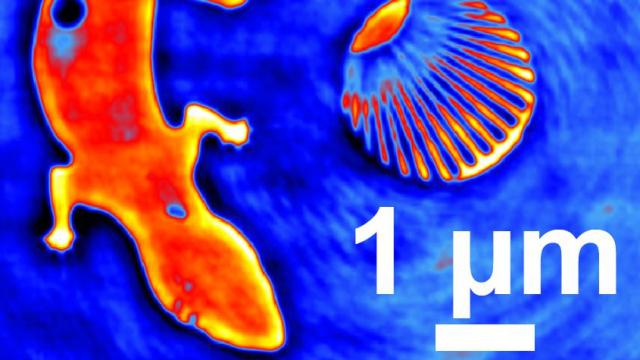When it comes to imaging microscopic objects, you have to make a decision: do you want high resolution images of stationary objects, or coarse images of moving ones? Fortunately, X-ray holography means that may not be the case much longer.
The problems comes, you see, from the way images are created. Super-high resolution images — such as as those acquired by an electron microscope — have to be slowly scanned, which means they take a long time to acquire, and require the object sit completely still. And to quickly acquire images, you typically need fast exposures, which produce low-resolution or grainy results, because of the resulting poor illumination.
Not so with a new technique using X-ray holography. Holography is really just a complex word to describe the theory of using light to create 3D images of things. But one thing it does require is light of a single frequency — because it relies on measuring how waves are different from each other to weave its magic, and that’s impossible with a mixture of frequencies.
With a single frequency of X-ray, then, you can throw waves at your sample — letting some pass through a pinhole nearby to preserve a reference wave — then compare the differences between the waves that have passed through the sample and the pinhole. The differences allow you to create a 3D representation of what the X-rays passed through, as the varying thickness and material cause the wave to change subtly.
Anyway, the bright folks at the Technical University of Berlin realised that the pinhole technique didn’t work very well: to get a sharp image the hole needed to be small, but then it didn’t let much light through the reference arm. The upshot was that it took a long time to acquire high-resolutions images — that same old problem as before.
But then, a lightbulb went on, so to speak: they could replace the pinhole with a series of concentric rings to let more light through. That made the images fast to acquire again — though, again, fuzzy. But the thing about those concentric circles is that the way they let light through is well understood by physicists, and some clever maths allowed the researchers to work backwards with the images, eliminating the fuzz from the rings and making the images pin-sharp.
And pin-sharp they really are. The entire image above, acquired using the technique, is less than six thousandths of a millimetre across, and the method can resolve structures as small as 46 nanometres — about the same size as a virus. And the best bit is that, because of all the light pouring through, exposure times are fast enough to study dynamic processes. Age-old imaging conundrum, consider your days numbered. [Nature Communications]
